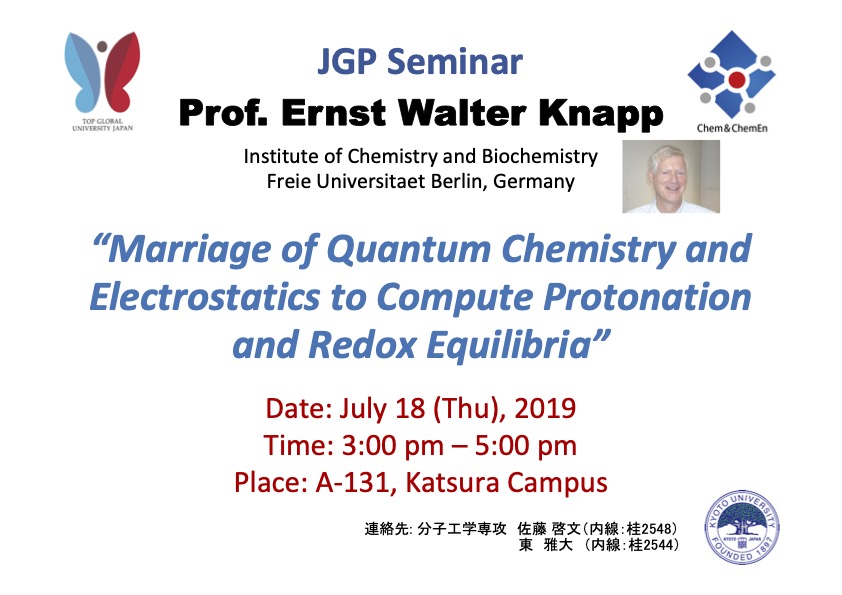分子理論化学セミナー(2019年度)
Prof. Michael L. Klein, FRS (Temple University)
“Wetting-Dewetting Transitions & Nature's Sensing Machines: Unveiling the Molecular Mechanisms of Pain”
日時:2019年9月21日(土) 10:30-
場所:京都大学工学研究科(桂キャンパス)A2-304号室
Membrane-bound channel proteins play key roles in human physiology. The transient receptor potential (TRP) family have an overall architecture similar to thevoltage gated sodium and potassium ion channels, which are responsible for the action potential, and consist of four sensor domains linked to a central pore. Structural studies over the past decade or so have yielded clues into the possible operational mechanisms of the TRP nanomachines, including the so-called capsaicin or vanilloid receptor, TRPV1. This presentation is focused on TRPV1, which promotes cation currents across cellular membranes in response to stimuli such as hotness, acidity and voltage. The molecular underpinnings of TRPV1 function, in particular the mechanism of temperature sensitivity, are still largely unknown. Molecular simulations have been employed in an attempt to shed light on the mechanism of the closed to open transition of TRPV1 in an attempt to rationalize experimental observations on Nature's important nanoscale sensing machine.
Prof. Ernst Walter Knapp (Freie Universitaet Berlin)
“Marriage of Quantum Chemistry and Electrostatics to Compute Protonation and Redox Equilibria”
日時:2019年7月18日(木) 15:00-
場所:京都大学工学研究科(桂キャンパス)A1-131

Prof. Tomaz Urbic (University of Ljubljana, Slovenia)
“Modeling anomalous properties of water ”
日時:2019年6月18日(火) 15:00-
場所:京都大学工学研究科(桂キャンパス)A2-304
We developed a statistical model which describes the thermal, volumetric and dynamic properties of water-like molecules. A molecule is presented as a two- or three-dimensional sphere with three or four hydrogen-bonding arms. Each water molecule interacts with its neighboring waters through a van der Waals interaction and an orientation-dependent hydrogen-bonding interaction. This model, which is largely analytical, is a variant of a model developed before for a two-dimensional Mercedes-Benz model of water [1] and parameterized for 3D Mercedes-Benz model of water [2]. Model was parametrized to describe experimental water and expanded to study dynamic properties like diffusion, viscosity and thermal conductivity.
Reference:
- T. Urbic and K. A. Dill, J. Chem. Phys. 132, 224507(2010).
- A. Bizjak, T. Urbic, V. Vlachy, and K. A. Dill, Acta Chim. Slov. 54, 532(2007).